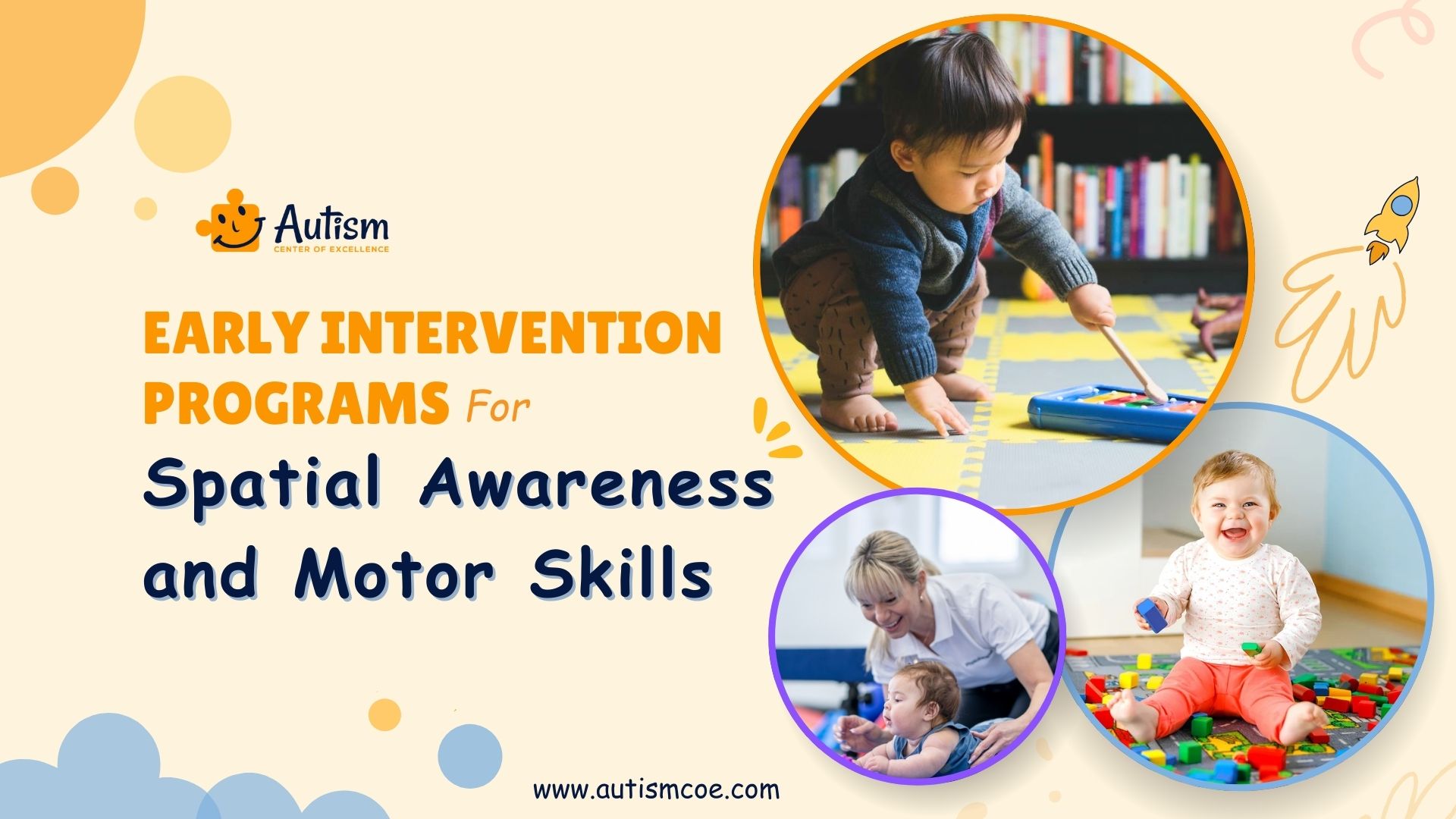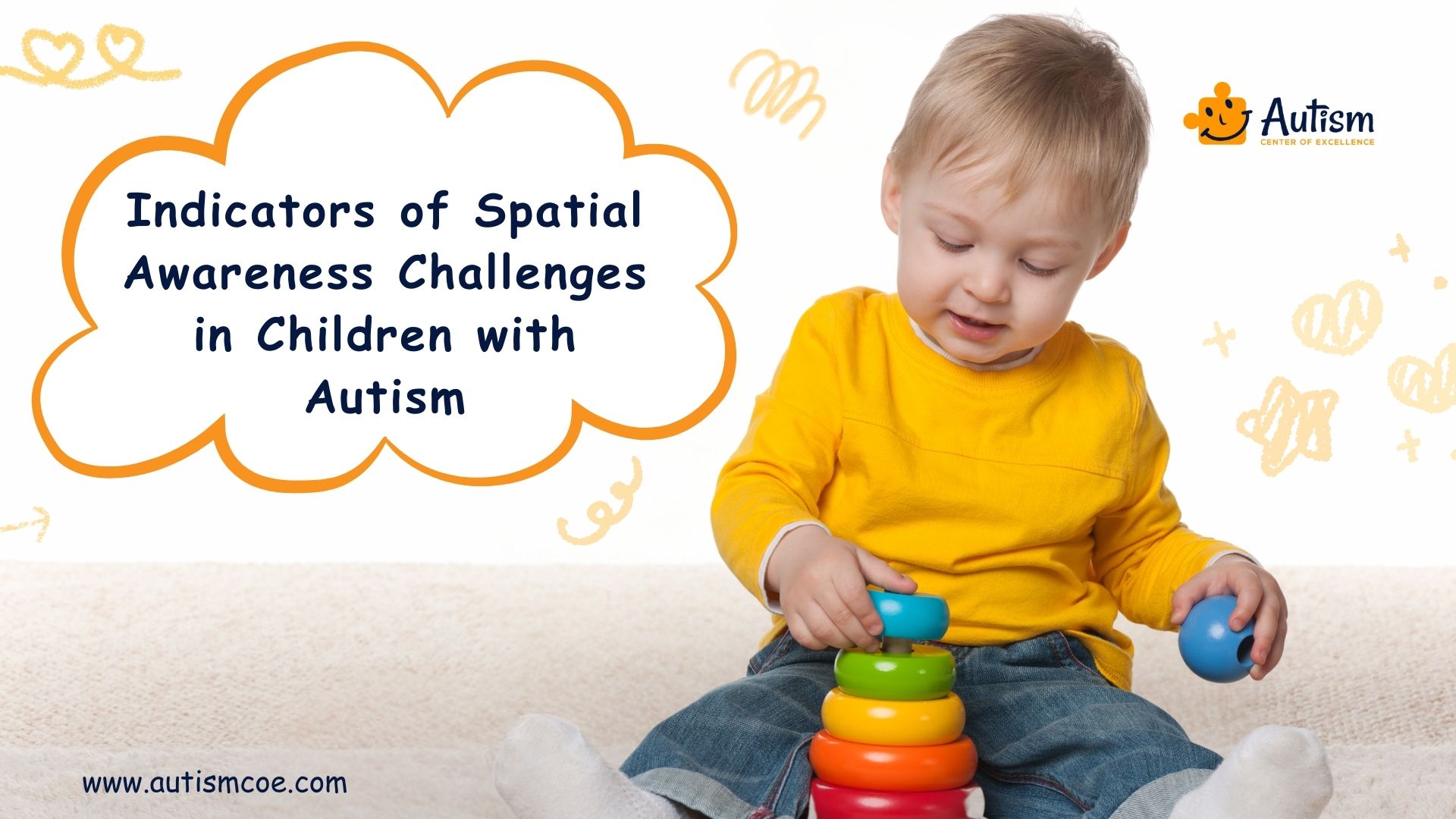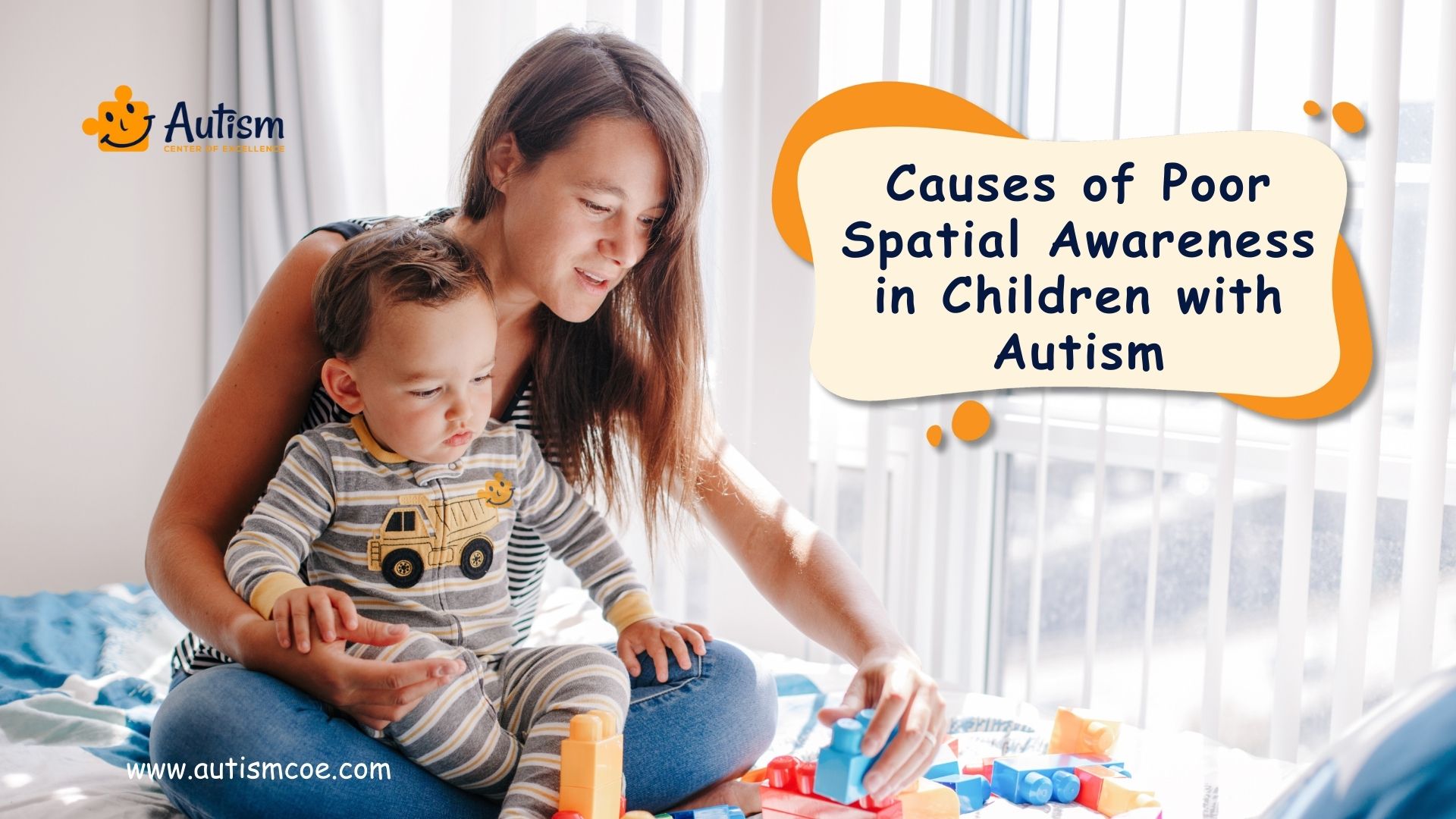Unit 29: Early Intervention Programs for Spatial Awareness and Motor Skills

Understanding how our bodies move and interact with the world around us is an essential part of growing up. This is what spatial awareness is all about—knowing where things are in space and how our bodies relate to them. Development of these skills might be a little different for children with autism. Do not worry! Proper support and Early Intervention Programs help such kids develop spatial awareness and motor skills so that even daily activities can be fun and easy.
In this blog post, we will see what spatial awareness is, why it is important, and how to help a child with autism by implementing specialized exercises and plans. Whether you are a parent, teacher, or therapist, you’ll find insightful knowledge in your quest to guide children toward a more confident and successful future.
What is Spatial Awareness?
Spatial awareness is like having a magical GPS inside your head. This would tell you how far away you are from objects, as compared to where you are. Think of playing on a playground; you know how far you are from the slide, and you can catch that elusive ball. That’s spatial awareness at work, helping you navigate your environment to do things every day safely and efficiently. For kids, especially those with autism, it is essential to learn this skill since they will have fun exploring the world more understandably.

Importance of Spatial Awareness in Child Development
Spatial awareness is a big deal when it comes to growing up. Here’s why:
Boosts Coordination and Movement:
Children learn to move around without collision. For instance, while cycling or playing sports, they Navigate Safely around obstacles.
Enhances Learning Abilities:
Understanding space helps extensively with subjects like math and science, whereby children learn to understand their shapes, sizes, and patterns.
Improves Social Interaction:
It becomes easy to play games and sports with friends, thus helping to make friends as well as work in teams.
Promotes Independence:
The child’s capability to estimate distances and move about within spaces helps instill confidence and, therefore, more independence in their daily activities.
Aids in Safety Awareness:
A child’s ability to move safely from one environment to another means there is little chance of injury or accidents.
How Autism Affects Spatial Awareness and Motor Skills
Spatial awareness can sometimes be an enigmatic puzzle presented to a Child with Autism. Autism can affect the way kids are aware of how they or other people are placed in space, which may challenge coordination and movement. Children with autism tend to make poor judgments on distances or can’t move from one place to another without stumbling. Playing catch or navigating through heavy crowds is going to be tougher. The good news, however, is that through autism motor skill activities and related programs, we can help.
Activities like obstacle courses or dance can turn learning into play, making it easier for kids with autism to develop these crucial skills. With good support, they can learn to navigate their world with absolute confidence, one step at a time.

Signs of Spatial Awareness Deficits in Children with Autism
The earlier a child’s spatial awareness difficulties could be recognized, the better they would be guided. Some common signs that parents and teachers may notice in children with autism are:
Difficulty Navigating Spaces:
Children tend to get into accidents by bumping into things and other people because they do not know where their bodies are in the space around them.
Struggling with Sports or Physical Activities:
Catching a ball, riding a bike, or even playing simple games might take a lot of work. The problem may arise from incoordination with the child.
Challenges in Drawing or Writing:
Children might need help to keep their writing straight on the page or may have issues while drawing shapes appropriately.
Trouble with Puzzle or Block Activities:
They might face difficulties assembling jigsaw pieces when doing puzzles or constructing structures using blocks.
Hesitation in Crowded Areas:
Toddlers become frustrated if there is overcrowding in the playground because calculating distances and movements becomes challenging.
These conditions can be identified early; thus, interventions that make a difference for children can be provided.

What Causes Poor Spatial Awareness in Children with Autism?
Understanding what may trigger poor spatial awareness in children can be helpful in finding better ways to support their needs. Several reasons have the potential to explain why these children have this problem. These are discussed below.
1️⃣ Neurological Differences
Ways in which the brains of children with autism process information are often regarded as being different from those of other children and thereby influence how they perceive and interact with the space around them.
2️⃣Sensory Processing Challenges
For many children on the autism spectrum, sensory input is an issue, making distance judgment as well as general position in space problematic.
3️⃣Delayed Motor Skill Development
As the Development of Motor Skills could be faster, it may present a problem while handling activities requiring fairly accurate movement and spatial judgment.
4️⃣Communication and Social Interactions
Since spatial awareness is associated with social activities such as playing, difficulties within these areas will affect the way in which their skills in spatial interaction develop.
From this understanding, parents, educators, and therapists can base their approaches according to the area of difficulty so as to improve the spatial awareness of these children, thus making the world more accessible and enjoyable.
Enjoying Reading?
Join Our Weekly Newsletters!
Subscribe now to stay updated with our latest email updates.

Early Intervention Activities to Improve Spatial Awareness and Motor Skills
Helping children with autism develop spatial awareness and motor skills is an exciting and enriching process. Early intervention is key, and there are plenty of activities and strategies to explore. Here’s how we can make a difference:
Obstacle Courses:
These are great spatial awareness activities. The kids learn to judge distances and improve their coordination by going through tunnels, stepping over hurdles, and weaving between cones.
Dance and Movement Games:
Simple dance steps or games like “Simon Says” encourage kids to move their bodies through space, thus building an appreciation for the spatial relationships of that movement.
Creative Arts and Crafts:
Cutting, coloring, or building activities enhance motor skills and space reasoning. Building a puzzle or model can be enjoyed while learning.
Interactive Technology:
Apps and video games that use spatial awareness as an activity have changed the way children, especially those with autism, play and learn. They are educational yet keep the children involved, thereby creating a modern angle to learning.
Physical Activities:
Playing in the water or practicing simple movements like jumping and dancing can be excellent for kids. These activities encourage coordination and balance while being lots of fun!
Sensory Play:
Activities like playing with sand, clay, or water can help children explore different textures and movements, which can improve both Sensory Processing and motor skills.
What is the AutismCOE ABA Early Intervention Program?
The AutismCOE ABA Early Intervention is a program that acts as a superhero camp for young Children Diagnosed with Autism. It works on the idea of teaching necessary skills to kids using a special approach called Applied Behavior Analysis (ABA) during their early years. This program has basically helped kids build their spatial awareness and motor skills, essential skills needed when exploring the world around them.
At the Autism Center of Excellence, therapists use game-like exercises to teach children to move their bodies more effectively and understand the world around them. From games that enhance coordination to exercises that bring a child into balance, it’s uniquely crafted to each child’s needs. Supportive and inviting, children can learn at a comfortable pace for them as they grow in confidence and independence.
Frequently Asked Questions & Answer
Is Spatial Awareness Considered a Motor Skill?
Spatial awareness is related to motor skills but is not a motor skill itself. It involves understanding space and one’s position in it.
What Are Sensory Motor Skills?
Sensory motor skills are abilities that involve the coordination of sensory input with physical movement, like catching a ball by seeing it.
What Abilities Do Spatially Intelligent Individuals Possess?
Spatially intelligent children can imagine things in spatial relations and navigate the environment accordingly.
At What Age Does Spatial Awareness Begin to Develop?
Most children would develop spatial awareness typically at about 18 months of age when they start exploring their surroundings.
Conclusion
During our research on spatial awareness and motor skills, we found that these have been seen as essential skills, specifically for children diagnosed with autism. Early Intervention plays an important role in how they develop. Challenges can be turned into opportunities for them to discover. The sooner we learn about the signs of deficits in spatial awareness, the more we will understand what causes them, and thus, we can support our little ones better.
Engaging in activities like obstacle courses, dance, or creative arts can be beneficial. Every small step counts as we explore and embrace strategies to help each child move confidently toward a brighter future.
Please Note: The content of this blog is for informational purposes only and should not be considered a substitute for professional medical advice, diagnosis, or treatment. Consult a qualified healthcare professional for personalized guidance tailored to your specific situation.

Bhavika Bhasin
Bhavika Bhasin is the Research and Marketing officer at AutismCOE. She works with children and adults with ASD. Her clinical research includes evaluating various available autism screening and diagnosis methods and their efficacy. She is currently developing a novel screening exam that is indicated to be more accurate than the existing available exams. She is also writes articles papers for various publications.

